Filipino street food embodies the vibrant spirit of Filipino culinary culture, offering an eclectic array of flavors, textures, and aromas that tantalize the senses. From bustling urban centers to quaint provincial towns, the streets come alive with the sizzle of grills and the aroma of frying delights. Whether it's the iconic skewered meats of "ihaw-ihaw," the savory goodness of "turon" (banana fritters), or the caramelized "camote cue", each bite tells a story of tradition, innovation, and local ingenuity. Street food in the Philippines isn't just about sustenance; it's a celebration of community, diversity, and the joy of culinary exploration.
Balut
-1710941754.jpg)
Balut, a snack food from the Philippines, has gained global recognition for its uniqueness. It is a fertilized duck egg consumed during its embryonic stage. This delicacy is commonly sold by street vendors in the country. To make balut, duck eggs are incubated for approximately 14 to 21 days until the embryo develops. The eggs are then boiled, resulting in a soft and flavorful treat with a creamy yolk and a partially formed duckling inside the shell. Balut is typically enjoyed with a sprinkle of salt and vinegar, offering a distinctive taste and texture. The yolk is rich and creamy, while the partially formed duckling adds a tender and slightly chewy element. It is often described as a combination of flavors, with hints of poultry and a unique earthiness.
Turon
-1710942097.jpg)
Turon is a popular and delicious street food in the Philippines. This delectable dish is made by wrapping slices of ripe bananas in spring roll wrappers, coating them with brown sugar, and then deep-frying until golden and crispy. Turon is often enjoyed as a sweet snack or dessert, commonly sold by street vendors and food stalls across the country. The combination of the sweet, caramelized bananas and the crispy texture of the wrapper makes turon a delightful treat. Some variations of turon also include adding jackfruit strips or sweetened langka to enhance the flavor profile. The dish is typically served warm, and the aroma of the caramelized sugar and fried wrapper is irresistible. This classic Filipino dessert is not only a delightful indulgence but also a representation of the vibrant street food culture in the Philippines.
Fish Ball
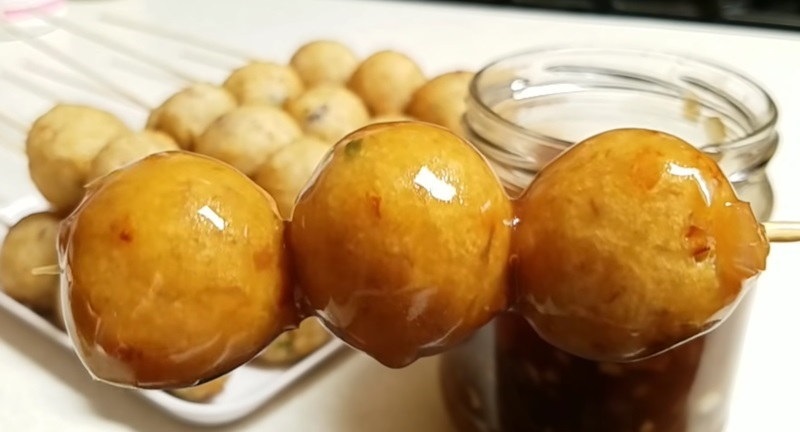
Fish ball is a simple yet flavorful dish made from ground fish meat, typically mackerel or tilapia, mixed with various seasonings and shaped into balls. The fish balls are then deep-fried until they turn golden brown, resulting in a crispy exterior and a soft, moist interior. One of the distinguishing features of fish balls is their unique texture - they possess a satisfyingly bouncy and chewy consistency when bitten into. The fish balls are typically served on bamboo skewers, ready to be dipped into a variety of sauces. The most common sauce is a sweet and tangy combination of vinegar, soy sauce, and chili, which adds a delightful kick to the already tasty fish balls.
Proben

Proben is a Filipino street food delicacy enjoyed in certain regions of the Philippines. It comprises the proventriculus of a chicken, coated in cornstarch or flour, then deep-fried to perfection. Typically served in vinegar, it can be enjoyed either in a bag or skewered on bamboo sticks.
Taho

Taho, a beloved snack in the Philippines, is a popular choice for a quick and satisfying breakfast. This delicious and nutritious dish consists of soft tofu, sweet syrup, and tapioca pearls. Typically served hot in small plastic cups by street vendors, known as "magtataho," taho's key ingredient is the soft tofu, crafted from soybeans. The tofu is carefully prepared and mixed with a sweet syrup made from caramelized brown sugar, resulting in a delightful taste. To enhance the texture, small tapioca pearls, locally known as "sago," are added to the taho. The combination of the velvety tofu, the syrup's sweetness, and the chewiness of the tapioca pearls creates a delightful harmony of flavors and textures.
Maruya (food)
-1711021352.jpg)
Maruya is a well-loved snack in the Philippines. This delightful treat involves dipping sliced bananas into a batter made of flour, sugar, milk, and eggs, before deep-frying them until they become a beautiful golden brown. The end result is a crispy and sweet snack that is perfect for satisfying afternoon cravings. Maruya is commonly enjoyed as a snack or dessert, often accompanied by a cup of hot coffee or tea. Its texture is soft and melt-in-your-mouth, with the banana slices becoming tender and slightly caramelized during the frying process. The batter creates a light and airy coating, providing a delightful crunch. What sets Maruya apart is its versatility. While the classic version uses bananas, some variations incorporate jackfruit or even yam slices into the batter.
Tokneneng
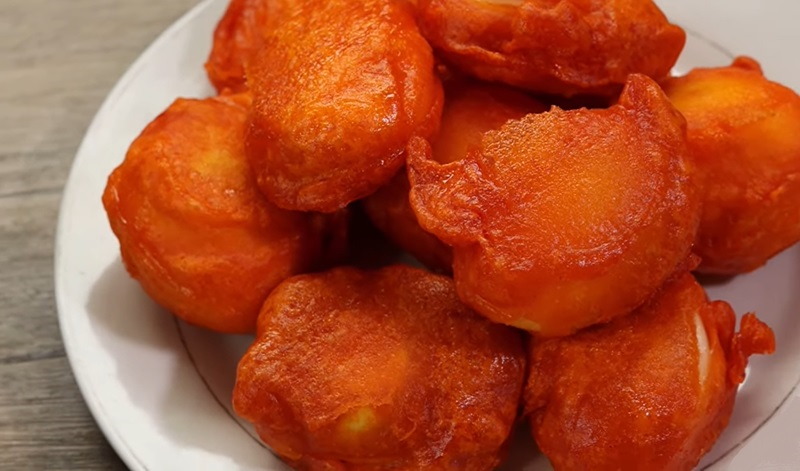
Tokneneng is a scrumptious and tasty treat consisting of hard-boiled quail eggs enveloped in a vibrant orange batter and fried to perfection for a crispy finish. The batter, crafted from a blend of flour, cornstarch, and a medley of spices, imparts a pleasantly tangy and savory flavor. Typically presented on bamboo skewers, Tokneneng is a convenient snack for munching on the move. It is commonly enjoyed alongside zesty vinegar or delectable sweet and sour sauce for dipping. The delightful combination of the eggs' creamy and tender interiors with the crunchy exterior creates a delightful textural contrast.
Banana Cue

Banana cue is a beloved snack in the Philippines, crafted from saba bananas - a variety that boasts a firmer texture and sweeter taste than regular bananas. Its name is derived from the Filipino term "kue," which translates to "skewer." To create this delectable treat, saba bananas are threaded onto bamboo sticks, coated in brown sugar, and then fried until they become beautifully caramelized. The outcome is a tantalizing snack that melds the crispiness of the coating with the natural sweetness of the banana. The caramelized sugar forms a sticky and slightly crunchy shell, while the banana itself remains soft and tender. The alluring scent of the caramelized sugar is irresistible, making banana cue a beloved street food in the Philippines.
Isaw
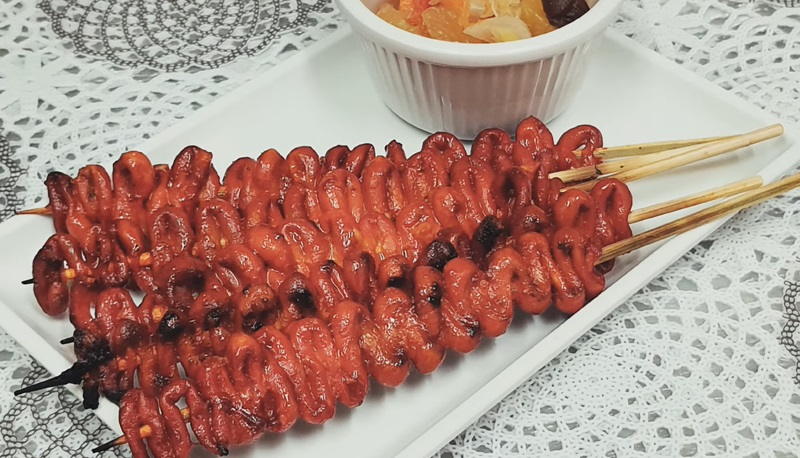
Isaw, a delectable snack, is crafted from meticulously cleaned chicken or pork intestines. These intestines are marinated in a tantalizing blend of flavors, skewered, and grilled to perfection. The preparation of Isaw begins with a thorough cleansing process to ensure the removal of any impurities. Once cleansed, the intestines are then immersed in a mixture of soy sauce, vinegar, garlic, and an assortment of spices, resulting in a delightful and zesty infusion. Following the marination, the intestines are threaded onto skewers and placed on a scorching charcoal grill. The heat from the grill imparts a smoky essence and a touch of char, elevating the Isaw's distinctive flavor profile. Typically, Isaw is accompanied by a side of fiery vinegar or a luscious, thick sauce for dipping.
Mami Soup
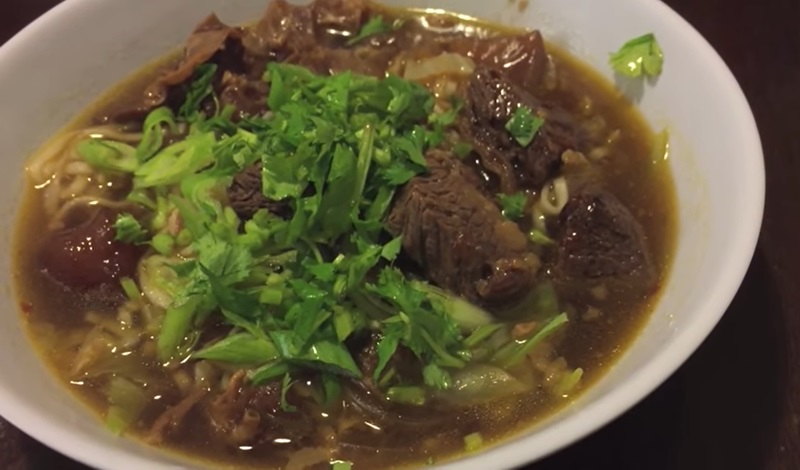
Mami soup is a beloved Filipino dish known for its comforting and flavorful qualities. This noodle soup is made with egg noodles, tender meat (typically chicken or beef), and a flavorful broth. It originated from Chinese cuisine and has since been embraced by Filipinos. The egg noodles used are thin and slightly chewy, adding a delightful texture. The meat is thinly sliced and tender, making it easy to enjoy. The broth is rich and savory, often seasoned with soy sauce and garlic, giving it a distinct Filipino taste. Garnished with chopped green onions, fried garlic, and a hard-boiled egg, mami soup is a feast for both the taste buds and the eyes. Some variations may include vegetables, tofu, or meatballs. It is a comforting and hearty meal, perfect for rainy days or when seeking comfort food.
Inihaw
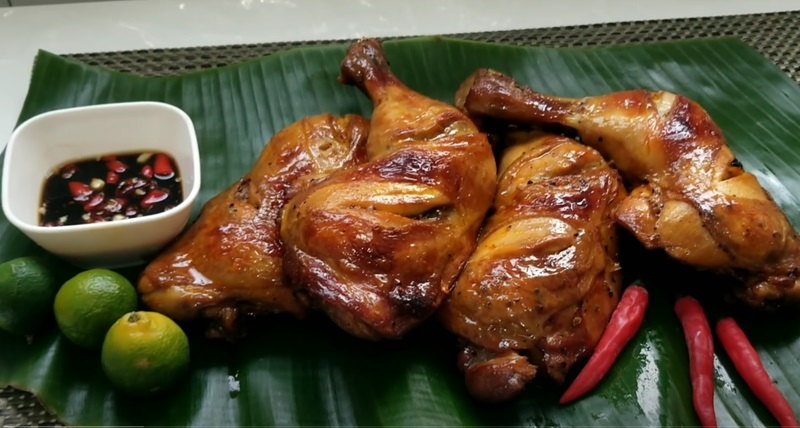
Inihaw, which means "grilled" in Filipino, is a dish that showcases the country's rich culinary heritage. It typically consists of skewered meats, such as pork or chicken, marinated in a combination of soy sauce, vinegar, garlic, and various spices. The skewers are then grilled over hot charcoal, creating a smoky and charred flavor that is uniquely Filipino. What sets Inihaw apart is the simplicity and versatility of the dish. It can be enjoyed on its own, dipped in a spicy vinegar sauce, or paired with steamed rice and a side of fresh vegetables. The combination of tender meat and bold flavors makes for a delectable street food experience.
Binaki
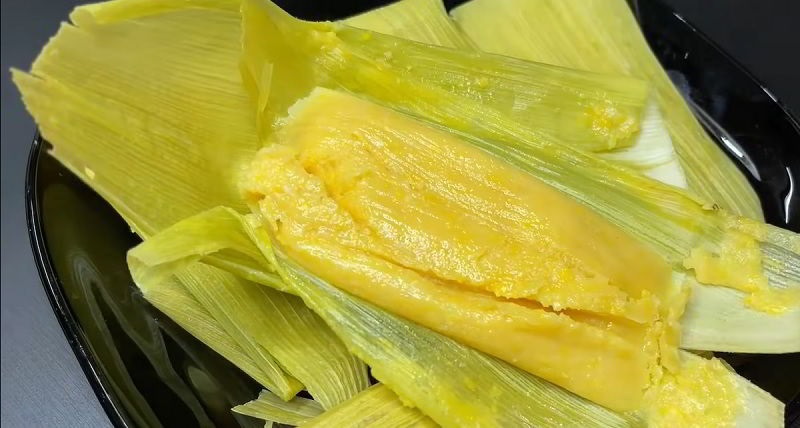
Binaki is a delectable tamale made with freshly grated corn, coconut milk, margarine, baking powder, and sugar. This special Filipino treat is typically steamed in corn husks or banana leaves, allowing the delightful flavors of nixtamalized corn to shine through. For extra indulgence, some versions of binaki include the use of condensed milk and the addition of cheese.
Camote Cue

Camote cue is a simple yet delicious dish made from sweet potatoes, locally known as "camote," that are coated in caramelized brown sugar and deep-fried until golden and crispy. The preparation of camote cue is quite straightforward. First, the sweet potatoes are peeled and sliced into thick pieces. These slices are then skewered on bamboo sticks and dipped into a pot of melted brown sugar. The sugar quickly caramelizes, creating a sweet and sticky coating on the outside of the sweet potato. Finally, the skewered sweet potatoes are deep-fried until they become crispy and tender on the inside. The result is a delightful combination of flavors and textures – the natural sweetness of the sweet potatoes contrasting with the caramelized sugar, and the crispy exterior giving way to a soft and creamy interior. Camote cue is often enjoyed as a snack or dessert, especially during the cooler months when the sweet potatoes are in season.
Tuslob Buwa
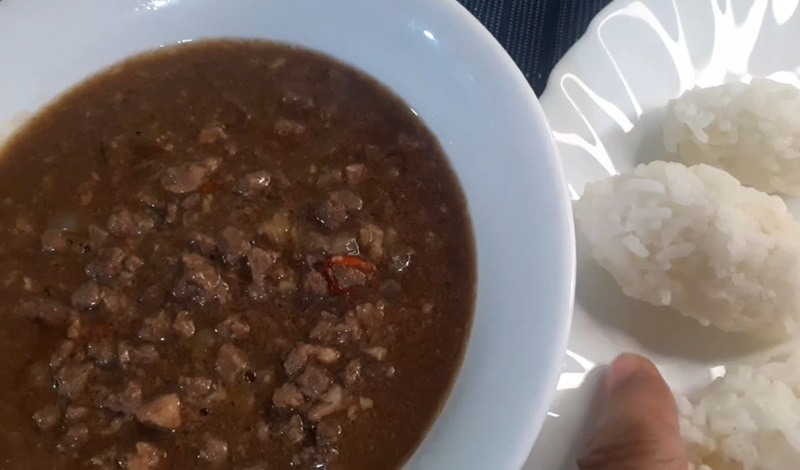
Tuslob buwa is a popular and unique street food dish in the Philippines, specifically in the city of Cebu. The name "tuslob buwa" translates to "dip the bubble" in English, which perfectly describes the way it is enjoyed. This dish is typically made by simmering pig's brain and liver in a savory soy sauce and vinegar mixture until it becomes a thick and flavorful sauce. The main component of tuslob buwa is the pig's brain, which gives the dish a creamy and rich texture. It is then paired with garlic, onions, and chili peppers to add a kick of spice. The sauce is traditionally served in a hot pan, and diners use puso (hanging rice) or puto (steamed rice cake) to dip into the bubbling mixture, hence the name.
Calamares
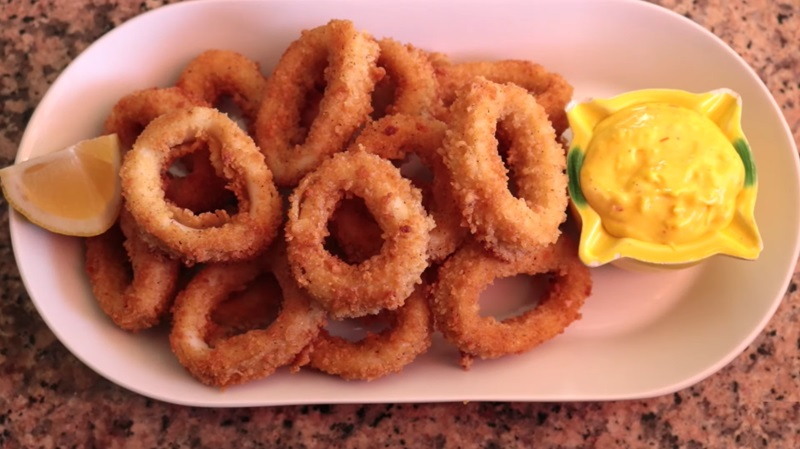
Calamares, a beloved seafood in the Philippines, perfectly captures the country's affinity for delectable and crispy fried squid. This delectable dish begins with fresh squid rings marinated in a delightful blend of soy sauce, calamansi juice, garlic, and various seasonings. The squid is then coated in a light batter crafted from flour and cornstarch before being deep-fried to a delectable golden brown. The end result is a delightful medley of tender squid encased in a satisfyingly crunchy and flavorsome exterior. Typically enjoyed as an appetizer or part of a main course, calamares is often accompanied by dipping sauces like garlic mayonnaise or vinegar infused with chili peppers.






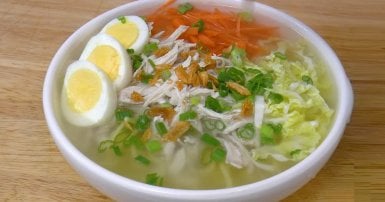

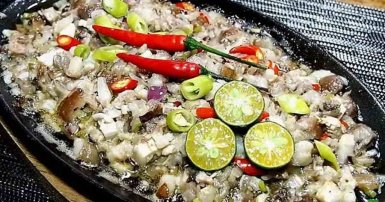


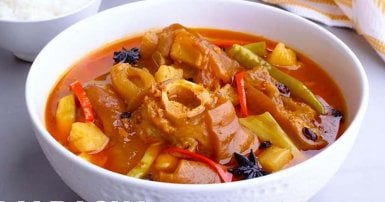

-1709813013.jpg)


